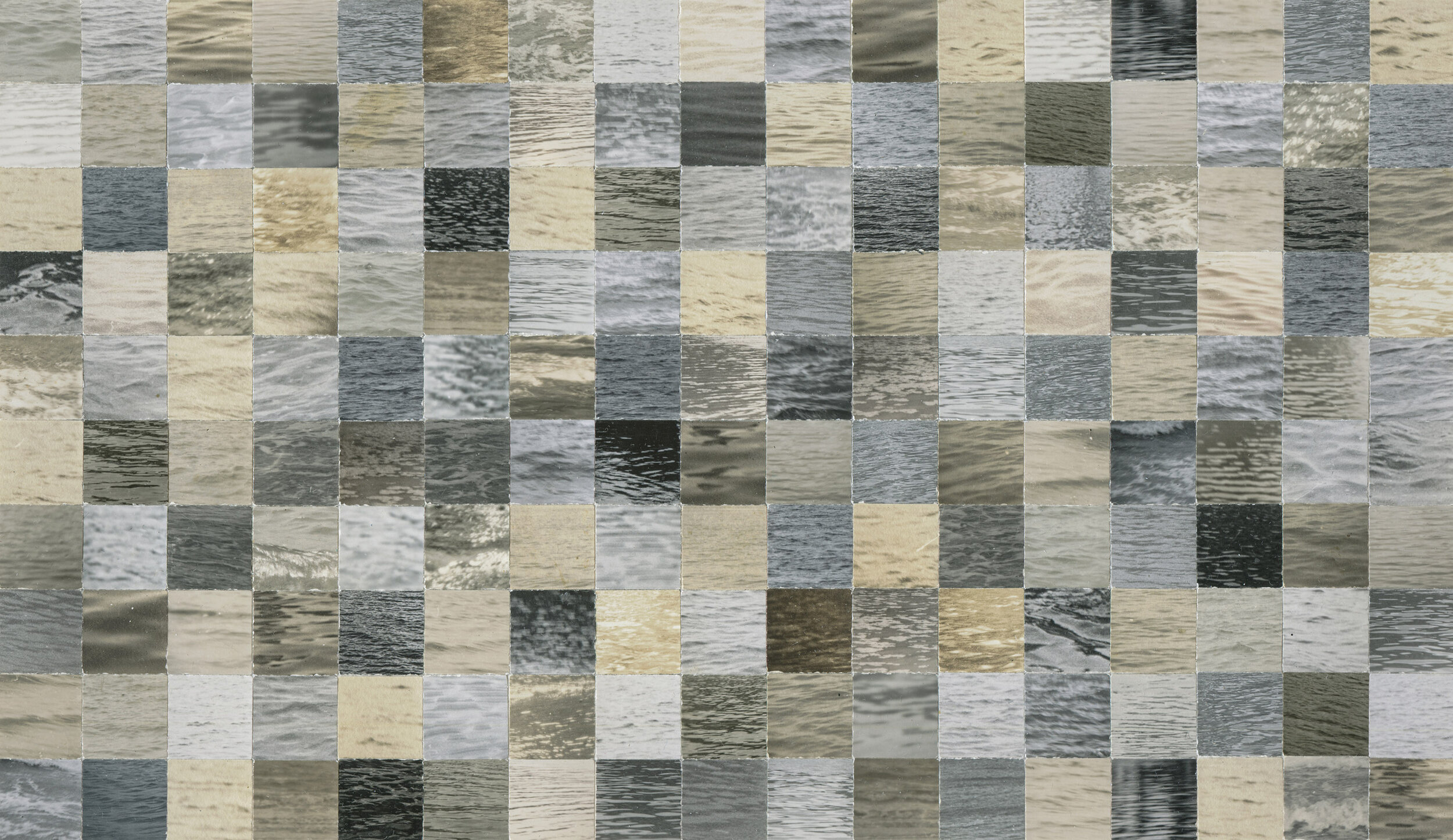Spotlight on Sophie Capron

Artist Sophie Capron offers a series of insights into the various environments her works traverse
The environment and me? We’ve got a circular thing going on.
Without exaggerating, it’s fair to say that every aspect of my artwork is about the environment.
My immediate natural environment – which I love walking through with my two young boys or running through on my own to ward off lockdown stupor – inspires me because I see narratives and histories in it that I want to explore and re-imagine. The wider environment, with all its troubles and beauty, inspires me because I want to protect it. The environments of others inspire me because I ‘borrow’ materials from them. And lastly, the environments my paintings settle in inspire me – wherever I exhibit, in whichever settings my work ends up.
And so it goes full circle – back to me and to my own little piece of this grander thing we call the ‘environment’ and I’m inspired to start a new piece of artwork...
I don’t necessarily differentiate between the natural world and our human-made environments. That’s because, to me, the two will always be interlinked.
I’ve always been fascinated by my surroundings and how, wherever you are, you see nature dominating. The process might be fast-paced, or it might take years; but plants or the weather or animals will always affect an environment. (And when I say ‘animals’, I include us humans.) I love seeing paint peeling off or rust forming on weather-beaten walls. I love seeing tree roots pushing their way up through tarmac. I love seeing scuffs and scratches left on surfaces by busy, bustling or accidental people. I love seeing this ‘story’ of life taking hold.
Our surroundings are in a continual state of evolution; it’s this process that I explore and why layers and textures are so integral to my work. We try to tidy mess or to cover up stains and marks, but things will always get sullied again. And that’s great because it’s the dirt that tells the story. For me, rot and rust tell of a history, while weeds – that always come back – remind me how powerful nature is.
Like lots of people recently, I’ve been using time in lockdown to reorganise my house, decorate rooms and nurture my garden. It’s been fun and rewarding, but I know – and I don’t mind – that the disorder will return. And so it should. Human-made structures, inside and out, will never stay perfect – time and nature will always impact on them. Luckily for me, I find this beautiful and inspiring.
As much as I know that change is inevitable, I want my work to celebrate the processes of the natural world, not destroy it.
To reflect what I am trying to represent with my art, it is imperative for me that I use resources that are reclaimed and upcycled. Second-hand canvasses, found fragments, leftover paint and other donated materials make up my staple supplies. Canvasses, paints and pencil marks are used and reused, covered and uncovered. Through a combination of sanding and the application of paint, details within each piece of work are hidden and revealed.
Creating beauty out of the disused or discarded is my passion and minimising waste is fundamental to my work. And this is where other people and their environments come into play. Through using everyday recycled materials, my work becomes part of a historical process.
Using leftover materials, I am working with my own intentions but also the remnants of other people’s handywork and choices. When we redecorate a room, we usually do it with emotion. From the conversation in the paint aisle, to the stepping back and admiring of the completed work, the process of painting is about appreciating the visual and aspiring to create something satisfying to look at. The feature wall in someone’s bedroom, the tones of a newly decorated nursery, and the bright hallway in someone’s new home all convey something about the people who have orchestrated that final look.
And so each donation of paint tells me a lot about the people who have given it to me. I also receive lovely letters and labels of where the paint comes from. For many people, the home is a castle and is a very private place – I don’t take for granted the little insights into people’s lives that these paints give to me.
Cornwall’s natural beauty is always inspiring, but it was an art residency in Berlin that had a big influence on me recently.
Though I am always appreciating landscapes and buildings wherever I am – often taking photos of walls, doors and pathways that grab my attention – walking around Berlin, without my children, without a task to complete and with only art on my mind, I felt a new appreciation for the urban narrative. The modern graffiti, the overt history of the war in the walls, the beautiful buildings and the parks all combined to show me a thousand stories of a city that has a striking past. Berlin chooses not to forget but also celebrates the present and strides into the future.
I understand these aspirations for the future – they too tell a story about humans and their interactions with their surroundings – but I fear that gentrification risks changing cities for the worse. Where change and growth is exciting, gentrification can hide a rich history and implies that the dirt and marks of life are unacceptable. Many people that I met expressed a desire for their city to retain its character. For them, Berlin is shaped by the past and they are proud of what it has survived. Because of this, their identity is linked intrinsically to their city.
I appreciate these values. I create art that is new, that might even be produced in a matter of days and yet I aim to tell old stories, to value the past and to treasure history and nature’s marks upon it.
But, of course, my artwork also ‘travels’. This might sound grandiose but when I pack up a painting, arrange delivery and then, sometimes weeks later, receive photos of my work in a new setting, I genuinely feel like my work has been on a journey.
A completed painting always looks different when installed: details of the gallery or home impact on the overall look. I love seeing this transformation. My painting has gone from a work in progress – with all the layering and revising and altering and redoing that my artist’s brain demands – to an artwork that is very much finished and at rest.
So, I’ll go for a walk and see the moss creeping along the damp patch on a wall. I’ll go for a run and see the splintered wood on a rain-soaked gate post. And then I’m back in my studio, with a reclaimed surface and a donated tin of ‘Pink Berry Passion’ paint and I’m off...
List of works in order of appearance:
Borrowed Blue; Pollen; Chalk Dust | reclaimed materials | each 60 x 61cm
Early Spring | reclaimed materials | 32cm x 32cm
Flint | reclaimed materials | 33 x 33cm
Etch | reclaimed object | 30 x 33cm
[Left] Borrowed Blue | reclaimed materials | 60cm x 61cm
[Right] Sea Foam | reclaimed materials | 60cm x 61cm
Lamella | reclaimed materials | 106 x 76cm
Artwork images above © Sophie Capron, 2020 | Used with permission





